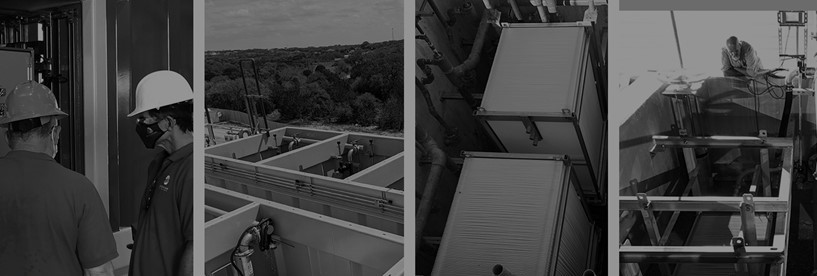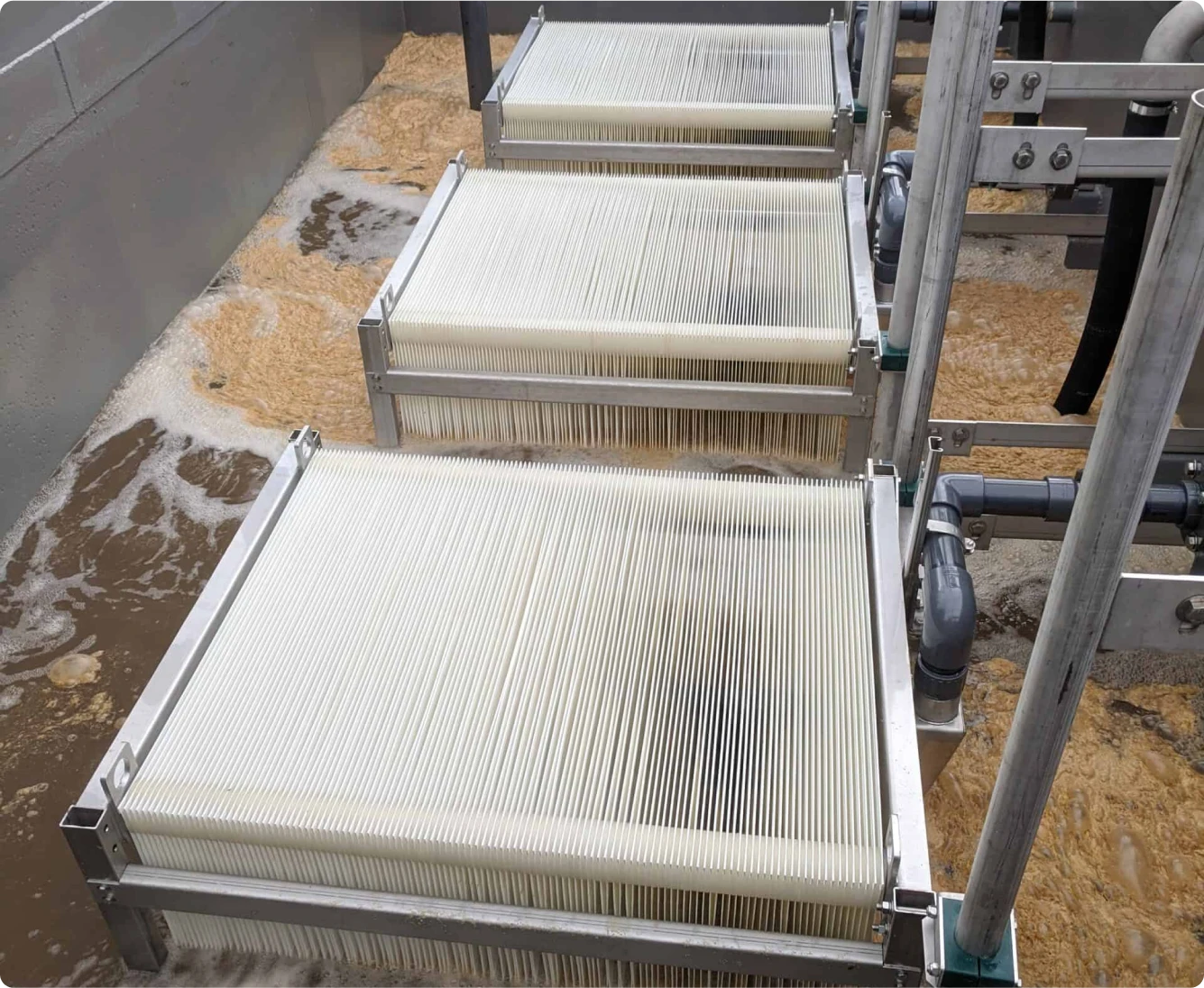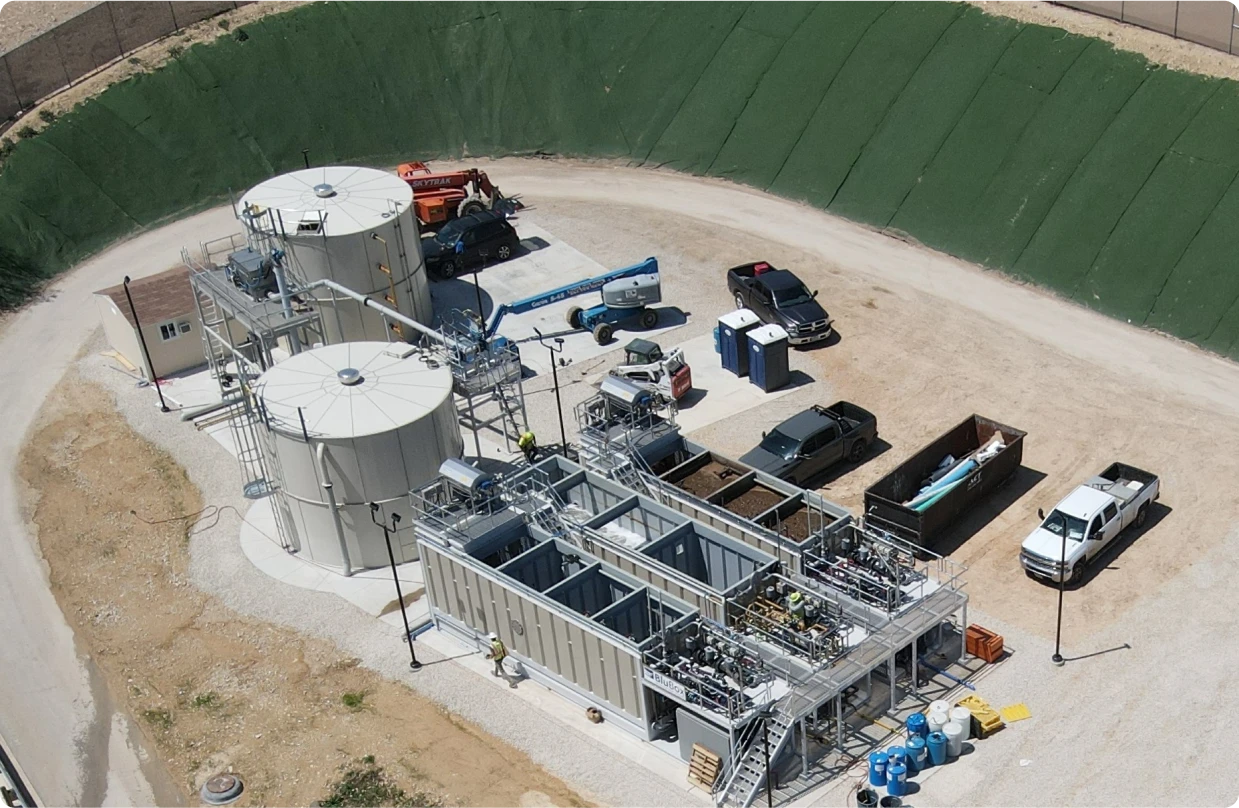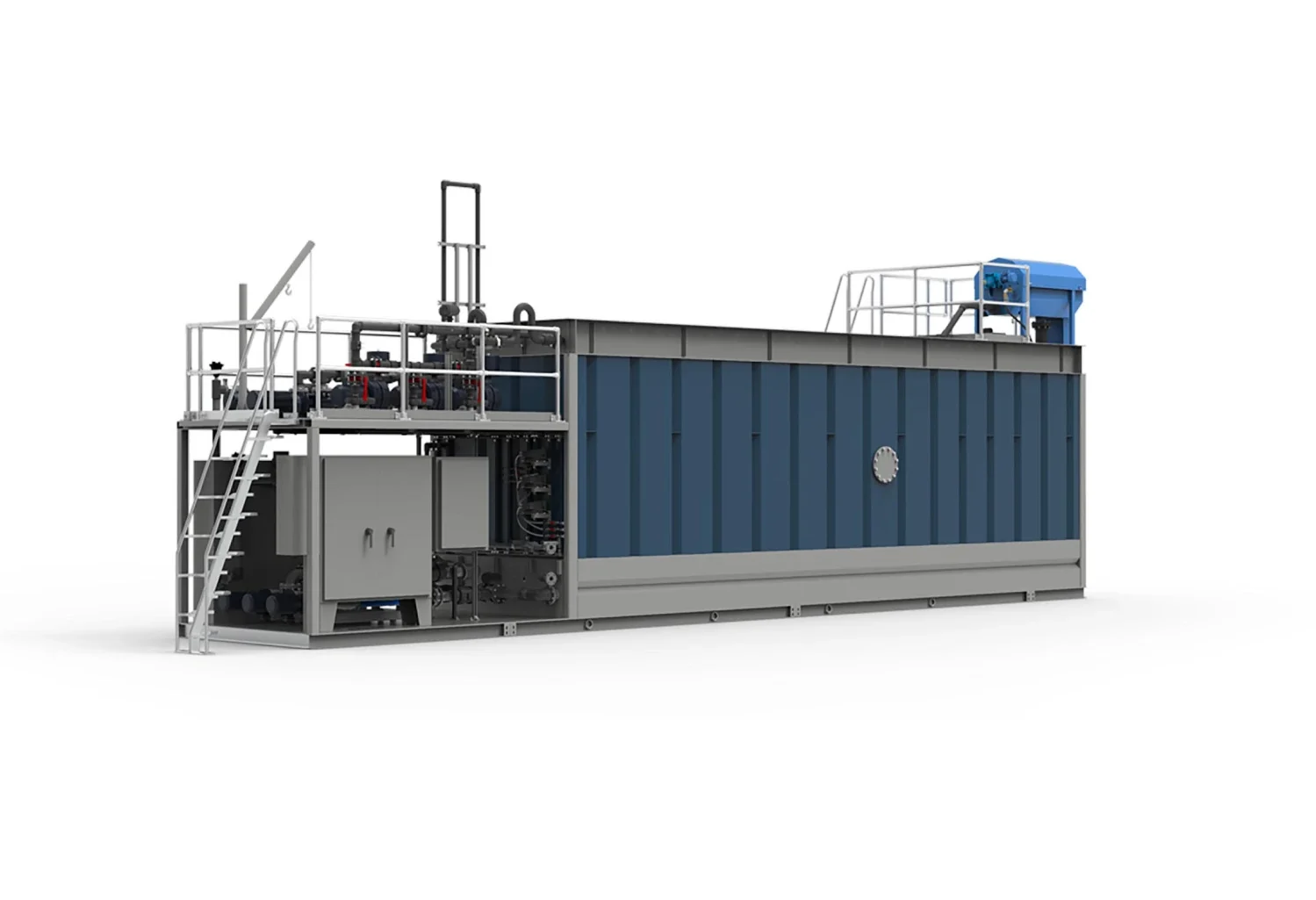
Modular MBR Systems
Integrated Water Services

As environmental regulations become increasingly stringent, Membrane Bioreactor Technology enables developers to treat wastewater to meet even the strictest permit regulations. Membrane bioreactors for wastewater treatment offer several benefits, including:
- Treated wastewater effluent can be used in reuse applications.
- Remote facilities can be constructed in decentralized locations.
- Cost-effective in flow ranges from 7,500 GPD to 2 MGD.
- Mobile units available, allowing for temporary wastewater treatment plant bypass.
In general, membrane bioreactor systems are comprised of similar components, just scaled to match the intended flow rate of the facility. Wastewater treatment systems have:
Headworks Screen
Removes coarse solids such as rags, sticks, wood, and other larger materials that clog or disrupt the biological wastewater treatment process.
Equalization Tank
Normalizes the otherwise inconsistent flow rate of a service area, which is essential for efficient biological treatment and effective wastewater management.
Treatment Basin
Has zones for anoxic and anaerobic processing and houses the membrane filtration units. This submerged MBR process optimizes the treatment of organic pollutants and ensures high wastewater quality.
Sludge Processing
A holding tank for biological processes and dumpster for landfill leachate management. This contributes to an effective industrial wastewater treatment system.
Effluent Discharge
Includes chemical contact tanks, reuse storage tanks, and/or discharge pumps for treated wastewater. These components support sustainable wastewater management and reuse practices.
Advanced MBR Solutions for Diverse Wastewater Needs

Membrane Bioreactor (MBR) plants are quickly becoming the go-to for efficient and sustainable wastewater treatment across a wide range of industries, private communities, and municipalities.
IWS excels in designing and building advanced MBR systems, incorporating major membrane technologies. Our expertise covers:
- Flat sheet and flat plate membranes
- Hollow fiber systems
- Ceramic membrane systems
- Polymeric membranes
This comprehensive approach allows us to deliver optimal performance and tailored solutions for diverse wastewater treatment needs, from industrial applications to municipal systems, based on the appropriate membrane for the unique application.

MBR plants are rapidly gaining popularity for efficient and sustainable wastewater treatment in private communities and municipalities alike. IWS specializes in designing and constructing advanced membrane bioreactor systems, utilizing all major membrane technologies. Our expertise includes flat sheet, hollow fiber, and ceramic membrane systems, ensuring optimal performance and tailored solutions for diverse wastewater treatment needs.
Sustainability Through Advanced MBR Solutions

IWS leverages its extensive experience in designing and constructing MBR wastewater treatment systems to deliver sustainable, customized solutions. We tailor each project based on critical factors like:
- Flow rates and nutrient loading.
- Phasing of future development.
- Local and state regulations.
- Existing site conditions.
- Anticipated treated effluent limits.
- Estimated construction costs.

Selecting the right equipment package is crucial for a project’s schedule, scope, and budget. IWS, an industry leader, offers comprehensive services. We’ve successfully:
- Completed projects across North America.
- Constructed facilities in both public and private sectors.
- Utilized MBR technologies for a wide range of reuse applications, including those meeting stringent Title 22 reuse effluent standards.

Want to explore the real world application of MBR technology?
Click here to view our latest MBR case studies.
Have inquiries about our MBR solutions?
Click here to Contact Our Experts.
Critical Components of MBR Systems
Membrane filtration is a critical part of treating wastewater, and MBR systems take it a step further. They use different types of ultrafiltration (UF) membranes to make sure the treated water is of the highest quality.
Managing membrane fouling is absolutely critical for the smooth operation of MBR systems. While the customer handles the cleaning, IWS designs systems with advanced techniques to minimize fouling and extend the life of your membrane material, making cleaning efforts more effective and less frequent.
MBR systems frequently use submerged membrane bioreactor configurations and UF membranes to significantly boost the efficiency and effectiveness of the wastewater treatment process.
The integrated biological process in MBR systems, which includes the activated sludge process, effectively breaks downorganic matter and suspended solids and significantly reduces nutrient levels in the treated wastewater. This results in high-purity treated water suitable for water reuse.
Nutrient removal is a vital function of MBR systems, achieved through specialized membrane modules. This ensures compliance with environmental standards and the production of high-quality treated wastewater effluent.
MBR systems consistently produce high-quality treated water. This makes it perfect for various water reuse applications, significantly contributing to sustainable water resource management.
Regular chemical cleaning of the membrane elements is essential for maintaining the efficiency of MBR systems and ensuring long-term performance.
MBR systems are also employed for treating landfill leachate and effectively managing biomass to ensure environmentally safe discharge.
Microorganisms play a crucial role in membrane bioreactor systems, directly impacting suspended solids concentration and the overall effectiveness of the wastewater treatment process.